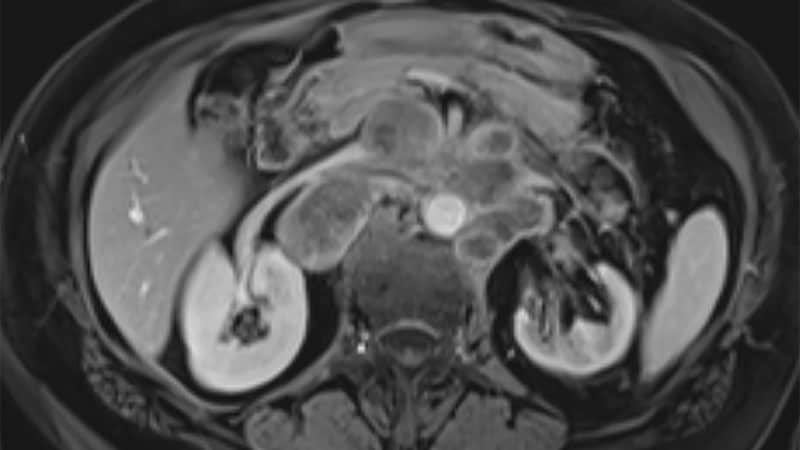Signs of pancreatic cancer that were missed on earlier imaging scans represent a “huge window of lost opportunity,” say United Kingdom researchers who report a novel analysis.
The study set out to identify the incidence and root causes of missed pancreatic cancer diagnoses on CT and MRI scans, the investigators explained at the United European Gastroenterology (UEG) Week 2022.
The team studied 600 pancreatic cancer (PC) cases, including 46 cases (7.7%) categorized as post-imaging pancreatic cancer (PIPC) — cases not detected on imaging performed 3-18 months prior to diagnosis.
They also reviewed 46 CT scans and 4 MRI scans performed in PIPC patients.
The detailed analysis showed that 36% of cases of PIPC were potentially avoidable, reported first author Nosheen Umar, MD, a gastroenterology research fellow at the University of Birmingham, Birmingham, UK.
In 10% of PIPC patients, imaging signs associated with pancreatic cancer, such as dilated bile or pancreatic ducts, were not recognized as such and were not investigated further. In 26% of scans, the signs of a mass lesion were not picked up by the radiologist.
The findings are notable as the time window for curative PC surgery is often short, and missing the diagnosis on cross-sectional imaging can result in worse clinical outcomes for patients already dealing with a challenging cancer that has generally poor outcomes, Umar told Medscape Medical News.
In fact, pancreatic cancer has the lowest survival rate of all cancers in Europe, the UEG noted in a press release. Life expectancy at the time of diagnosis is just 4.6 months, and 5-year survival is less than 10%, Umar said.
Pancreatic cancer causes 95,000 deaths in the European Union each year, the UEG noted, adding that by 2035, the number of cases is predicted to rise by almost 40%.
Details of Missed Imaging Signs
The aim of this study was to establish the most plausible explanations for missed imaging signs of PC, Umar explained, adding that early diagnosis is vitally important for offering patients the best chance of survival.
Cases analyzed for the study were identified from electronic medical records of adults diagnosed with PC between 2016 and 2021 at two National Health Service providers. An algorithm was developed to categorize PIPC and assess potential causes of the missed diagnoses.
The PIPC cases were categorized by type:
-
Type 1 – A focal lesion on previous imaging reported in the same pancreatic segment as PIPC (0% of cases)
-
Type 2 – Imaging changes that can be associated with PC reported on previous imaging (20% of cases)
-
Type 3 – No lesion or imaging changes that can be associated with PC reported on previous imaging in the same pancreatic segment as PIPC, but lesion or imaging changes noted on review after PIPC diagnosis (26% of cases)
-
Type 4 – No lesion or imaging changes that can be associated with PC reported on previous imaging in the same pancreatic segment as PIPC and no lesion or imaging changes on review after PIPC diagnosis (54% of cases)
“We hope this study will raise awareness of the issue of post-imaging pancreatic cancer and common reasons why pancreatic cancer can be initially missed,” Umar stated in the UEG press release. “This will help to standardize future studies of this issue and guide quality improvement efforts so we can increase the likelihood of an early diagnosis of pancreatic cancer, increase the chances of patient survival and, ultimately, save lives.”
The authors reported no relevant financial relationships.
United European Gastroenterology (UEG) 2022: Abstract 2785. Presented October 11, 2022.
Sharon Worcester, MA, is an award-winning medical journalist based in Birmingham, Alabama, writing for Medscape, MDedge and other affiliate sites. She currently covers oncology, but she has also written on a variety of other medical specialties and healthcare topics. She can be reached at [email protected] or on Twitter: @SW_MedReporter.
For more from Medscape Oncology, join us on Twitter and Facebook
Source: Read Full Article






